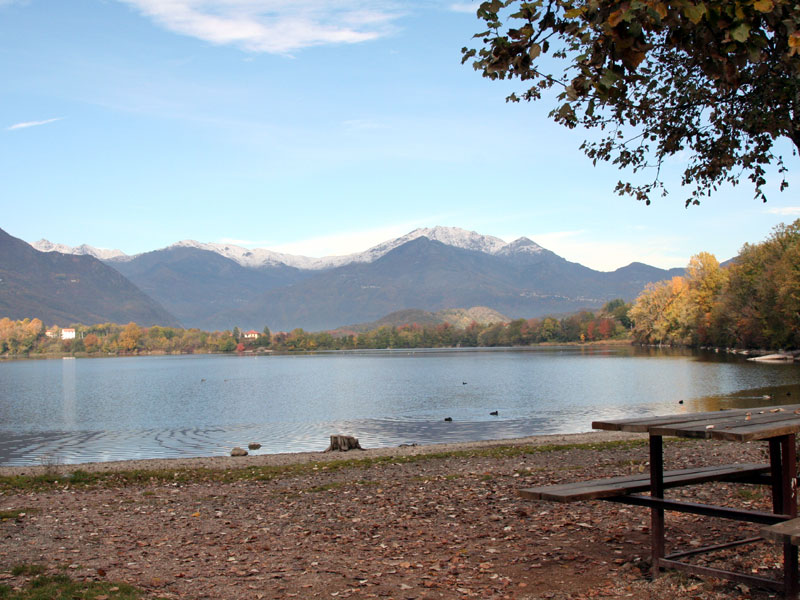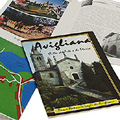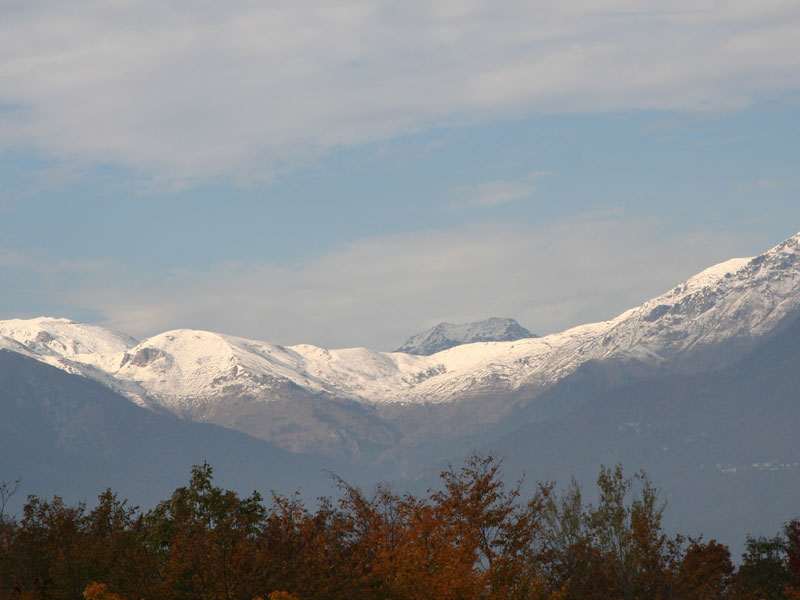Points of Interest
Avigliana, a Town of Art and History
The first medieval nucleus of Avigliana, the "Borgo Vecchio", is situated on the northern slopes of Mt. Pezzulano. The name of the town derives from a Roman family (the Avilii family) living in the plain, near the area called "ad fines", where nowadays the village of Malano lies. From its origins, the Borgo Vecchio played an important role in the trade between western Europe and Italy, since it was situated on the route leading to France. Its importance increased with the presence in Italy of the Savoia family. Tradition has it that Beato Umberto III (about 1127-1189), and Conte Rosso (Amedeo VII, 1360-1391) were particularly linked to Avigliana.
The buildings characterizing the passage from the Romanesque style to
the Gothic in the medieval Avigliana might date back to 12th-15th
centuries: the churches (S. Pietro, S. Maria, S. Giovanni), the walls,
the entrances, the porticos, the houses of the nobility in Piazza Conte
Rosso and Piazza S. Maria along the historical town center.
After
Torino was chosen as the capital of the kingdom, Avigliana lost its
importance as a border town. The defensive system of the castle which
was built to protect the town from the invasions of Arduino, called "il
Glabro", lost its military importance and was transformed into a noble
residence. The events of the 17th century led to its ruin: it was
strongly damaged in 1630 (a particularly bad year for the town, which
was striken by the plague) and it was turned into the current structure
by the French marshal Catinat in 1691.
The Hills
The hills on the western side of Lago Piccolo, crossed by a number of
tributary streams of the lake, are covered by coppice woods formed by
chestnut trees, hornbeams, and ash trees, and they are populated by
many mammals (roe deer, foxes, badgers, squirrels, stone martens) and
birds (woodpeckers, titmouses, blackbirds, jays, and many others).
The
central hills of Montecapretto, on the northern side of Lago Grande
have no watercourses, and are characterized by the presence of ash
trees, locust trees, elms, and cherry trees.
On Mt. Pezzulano, in
the northern section of the Park, there are the ruins of the Savoia
castle dating back to the 10th century AD.
In the forests of the
morainic amphitheater in Avigliana it is possible to see erratic
boulders, silent evidences of the presence of glaciers in the
Quaternary period. A path connecting the Park with the surrounding
territory will lead you among them.
Mareschi Area
Mareschi area is the wetland lying on the westernmost side of Italy, on
the north-western side of Lago Grande; it gathers the waters coming out
of the lake towards Canale della Naviglia and represents an environment
where the unobstrusive presence of man and nature coexist.
This
area is particularly silent, you can listen only to the sounds of
nature. It is possible to hear frogs and tods croacking, pheasants
rapidly crossing the meadows, and grey herons flying. Moreover, if you
pay attention and you are lucky, you can see hawks, buzzards, and kites.
On the eastern side of the marshland there are the ruins of one of the biggest explosive factory of the 1940s: Nobel of Avigliana, which represents one of the most interesting examples of
industrial architecture of the beginning of the last century. It was
bombed many times, and it was the theater of partisan activities during
World War II; it was closed in the 1960s for trade reasons.










